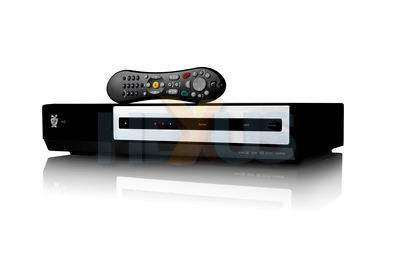In principio creavit Deus caelum et terram
Once upon a time, people lived in caves and hunted animals with spears. Then, they recorded things from the TV onto small black cartridges filled with magnetic tape. Finally, in 1999, the Digital Video Recorder was born and civilization was discovered. I may have missed out some minor details, but that's the short version.
The Digital Video Recorder (DVR or PVR) enabled people to program recordings and play them back using an on-screen program guide, rather than messing with manually setting start and end times. Recording directly to an internal computer hard disk rather than to removable tape, the early DVRs (ReplayTV, TiVo or DISHPlayer) enabled other interesting functionality, such as the ability to pause or rewind "live" TV.
As is tradition these days, as soon as people develop an interesting hardware device, people start work on a software-based solution to accomplish similar features on more conventional hardware - in this case, the VDR project began in February 2000 as an attempt to bring DVR functionality to a conventional GNU/Linux PC. Using a GNU/Linux PC for media isn't such a strange prospect - after all, the popular TiVo DVR is Linux-based - and over time, a couple of other projects spawned, such as Freevo and MythTV. Similarly, on the Windows side, a number of free and paid products appeared, such as MediaPortal, GB-PVR, SageTV, and Microsoft's own Windows Media Center (now included as part of Windows Vista).

The reasons to use a PC rather than a set-top box are many. For one, you're in control of the specification - you can add extra tuner cards to record extra channels, or mix satellite, cable and terrestrial in the same machine. You can also assign extra functionality to the machine, rather than having a limited single-task machine like a Sky+ recorder. With more fully-featured PVR software such as MythTV or Windows Media Center, you also enter the world of client-server, where one big noisy machine contains all the TV recording equipment, and distributes the content around the house or beyond to smaller, more quiet devices. And, perhaps most importantly, a software-based DVR gives you the satisfaction of an extra computer for your PC hobby - along with all the joy and frustration this often brings.
So, this article will be about running a home-entertainment server, using Ubuntu GNU/Linux at its core, with TV functionality from the powerful MythTV project. Above all, this project will be about interoperability - not every household runs an all-Linux setup, so we'll be looking at multiple ways to enjoy your server's functions without needing to replace every OS in the house. If you have no interest in some of the extra functionality, there are a number of alternative GNU/Linux distributions available which are MythTV-specific, such as Mythbuntu or KnoppMyth. However, for this more general project, I've decided to stick with a "normal" desktop distribution.









